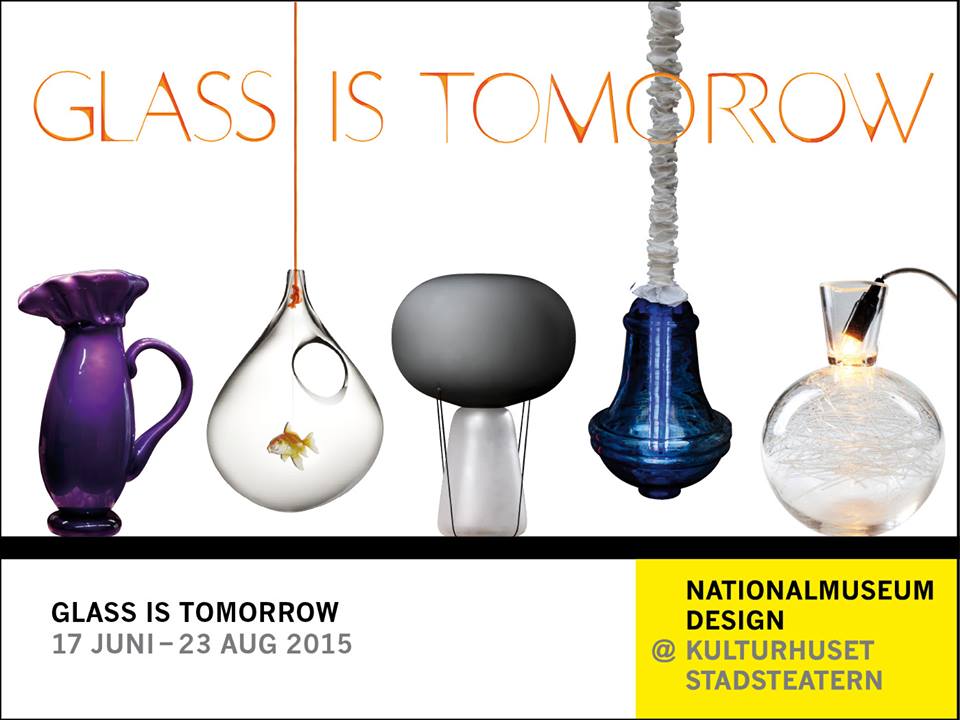See the result of a European project where designers, glass-blowers and others within the glass community have come together to explore the potential of glass. The exhibition features some 200 pieces of unique glass art and glassware.
Playing with transparency, opaqueness, colour, shade and light; Glass is Tomorrow has transposed the savoir-faire of glass-making into the design sphere across Europe.
Co-funded by the European Union Culture Programme since 2011, the project brings the world of glassmakers and designers together by forging strong links between the individuals and territories involved in this age-old craft. The creative ideas born from mobility, exchange and dialogue; from the knowledge of a particular place and its heritage; nurtured by traditions and new sources of inspiration and innovation.
Glass is Tomorrow includes a series of workshops and subsequent exhibitions together with partners and associated partners – major centres of glassmaking, production houses and educational programmes that still provide training in this craft, and of the makers and designers of objects.
After the first adventure in Nuutajärvi, Finland with Iittala, in Novy Bor, Czech Republic with Verreum, and in Meisenthal with CIAV (Centre International d’Art Verrier), Glass is Tomorrow has currently completed its second phase of joint creative workshops before embarking on a traveling exhibition tour. The second programme began in southern Sweden with The Glass Factory in Boda; continued on to Domaine de Boisbuchet/CIRECA (Centre International de Recherche et d’Education Culturelle et Agricole) with The Corning Museum of Glass’ Glass Lab™; ESADSE (Ecole Supérieure d’Art et Design de Saint-Etienne) in collaboration with Saint- Just Glassworks; CIAV (Centre International d’Art Verrier) in Meisenthal; and Şişecam’s Nude group from Denizli – in western Anatolia and Istanbul – and ending at London’s RCA (Royal College of Art).
The workshops have produced objects that fit in with the meaning of beauty, confronting the fragility of age-old ceramics and glass-making industries as much as large factories – which were often made into rootstock for a forever bygone ‘belle epoque’. Using design to reinvent glass art is the challenge, fueled by desires and ideals, that Glass is Tomorrow has set for itself. It is no longer the industry that is necessarily leading innovation and design but the people who draw from within themselves the strength to create; to soak up the culture of the place during each workshop, in regions that are historically entrenched in a glassmaking tradition.
The results of the Glass is Tomorrow project will be on show at Nationalmuseum Design, starting on 17 June. The exhibition will feature a selection of pieces from the various workshops, presented thematically by manufacturing method. In all, around 200 glass artifacts by some 50 designers from all parts of Europe will be on display.
In Stockholm, the exhibition has been expanded to include some unique pieces by 10 glass designers who have a connection to the city: Esmé Alexander, Anna Berglund, Frida Fjellman, Ulla Forsell, Gunilla Kihlgren, Simon Klenell, Matilda Kästel, Sara Lundkvist, Fredrik Nielsen and Karin Törnell.
Earlier this year, Glass is Tomorrow appeared at the Musée de la Mine in Saint-Etienne, France, coinciding with the Biennale Internationale Design, and at the Milan furniture fair with Nude Glass from Turkey. After Nationalmuseum Design, it will move on to the Royal College of Art in London during London Design Festival.


